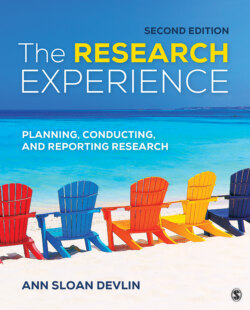Читать книгу The Research Experience - Ann Sloan Devlin - Страница 32
Ways in Which Theories May Differ: Scope and Parsimony
ОглавлениеTheories differ in scope, that is in how much territory they cover, or the range of behaviors to which they apply. An example of one environmental theory broad in scope is Urie Bronfenbrenner’s Ecological Systems Theory (Bronfenbrenner, 1977, 1979), which explains the various environmental contexts of child development. There are five contexts in this theory: microsystem (immediate environment), mesosystem (connections), exosystem (indirect environment), macrosystem (social and cultural values), and chronosystem (changes over time). Thus, this theory essentially covers the entire “landscape” of child development! In contrast, Ulrich’s theory previously described is more limited in scope, applying more narrowly to health facility design.
Theories may also differ in their parsimony, that is the extent to which few rather than more explanations are needed to explain the phenomenon. Scope and parsimony are distinct concepts. One could, for example, have broad scope but need few explanations for the behavior(s). An example of a parsimonious theory with broad scope is Lewin’s postulation (Lewin, 1933) that behavior is a function of the person and the person’s environment (psychological life space) as experienced. This theory was initially represented as B = f(P E) and sometimes later as B = f(P x E).
In the history of science, parsimony appears frequently as a valued characteristic of theories. What is known as Occam’s Razor, named after 14th century English philosopher William of Occam, posits that, given competing explanations for a phenomenon, the simplest one is best. The concept of the razor comes from the idea of reducing (i.e., shaving) the explanations to the simplest. One advantage of such simplicity is that it makes the theory easier to support (or falsify). This emphasis on simple explanations does not originate (or end) with Occam, as Aristotle claimed superiority of using fewer postulates or hypotheses. One can also point to Newton, Einstein, Hawking, and others in support of this general concept (see, for example, Baker’s entry on “Simplicity,” 2016, in the Stanford Encyclopedia of Philosophy).
Another aspect of theories to appreciate is that they are powerful; in some instances, theories may become self-fulfilling (Ferraro et al., 2009). In their commentary about why theories matter, Fabrizio Ferraro et al. cited the work of Carol Dweck (2006), who showed that people’s beliefs about intelligence (whether fixed vs. mutable/changeable) can shape their behavior. In particular, those who believed that intelligence was fixed behaved differently (e.g., avoided tasks where they thought they would fail) than did those who believed that intelligence was mutable. Dweck’s research also showed that these beliefs about intelligence can be changed through social influence. In every situation, we need to ask research questions about the tenets or principles that theories propose.
